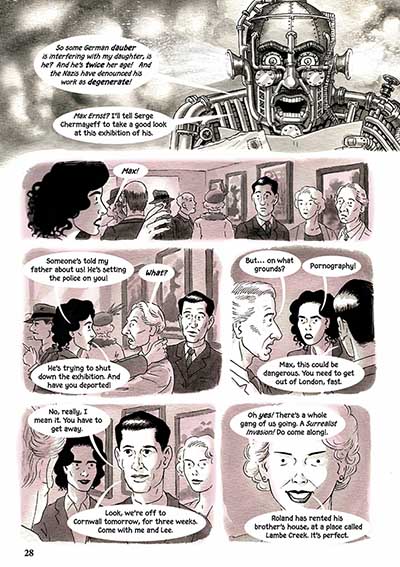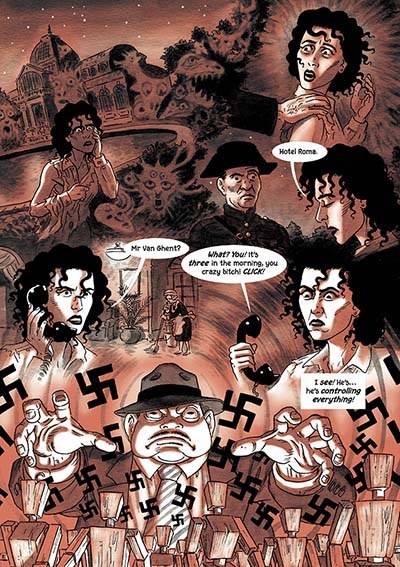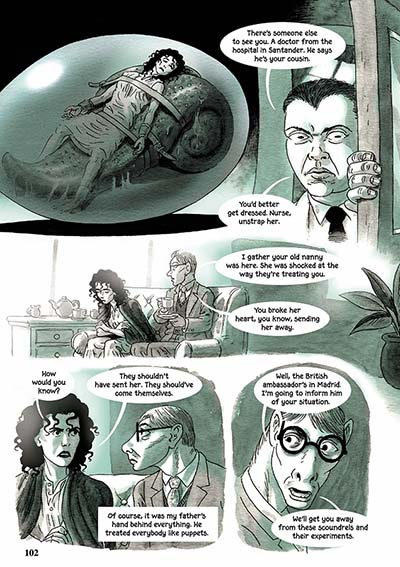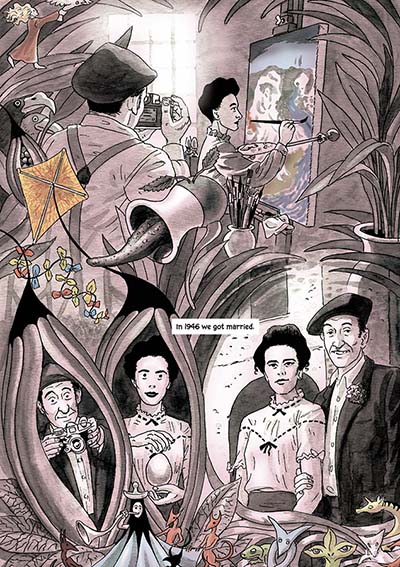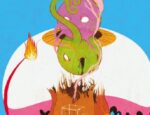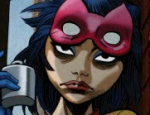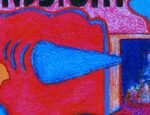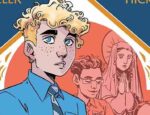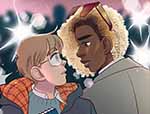Depicting the life and career of a remarkable artist like Leonora Carrington in only 144 pages is no mean feat. In her 94 years on this earth, activist Leonora experienced a Nazi invasion, fled her home country in Europe, became a figurehead of the Surrealist movement, a renowned painter, and an advocate of women’s rights. How does one even condense such a layered story into a short graphic novel? Yet, Mary M. and Bryan Talbot have done just that in their graphic biography from SelfMadeHero, Armed with Madness: The Surreal Leonora Carrington.
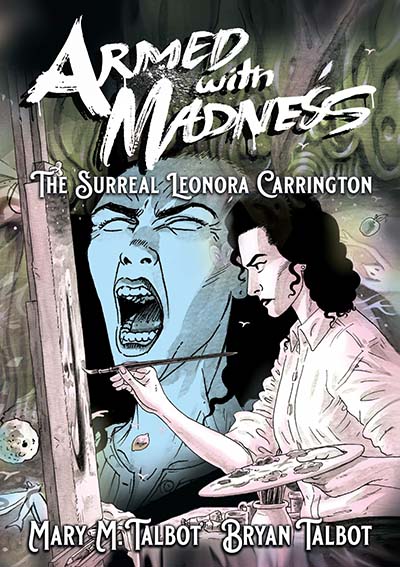
Talbot and Talbot warn readers what they are in for by including the word ‘surreal’ in the title; they do not shy away from the illogical and dreamlike actions which encompass the Surrealist movement. Established after World War One, the term surrealist was, somewhat fittingly, coined the same year of Leonora’s birth in 1917. This radical artistic movement focused on the unconscious mind expressing itself – in merging dream and reality, finding beauty in the uncanny and revolutionising the human experience. The Talbots’ depiction of Carrington quickly encapsulates all these qualities: on page one, we are greeted with a direct quote from Carrington: “I am armed with madness for a long voyage”. The opposite spread depicts a wide-eyed Leonora staring into the eyes of the reader, holding an egg, and decorated with stars, demons, and strange shapes. “My name is Leonora”, she says, “and I’m mostly a horse, but sometimes a hyena”. This graphic biography is ready to dive right in and embrace surrealism in all its phantasmagorical wonderfulness.
Black and white panels follow, with a flashforward to a screaming Leonora-Hyena hybrid, being held down by a doctor and nurse and being told to “behave”. Leonara’s hair is almost Medusa-like, with electrifying tendrils bursting from her head as she screams angrily. Perhaps most terrifying are her eyes, which are completely absent and depicted simply as white holes, devoid of feeling, but still burning with rage.
We flash back, this time to Leonora’s childhood. Whilst she grows up seemingly in the lap of luxury, her free-spirited nature often gets her in trouble with her guardians. So much so, that when sent to school, the nuns think she is possessed, and her fellow school friends want nothing to do with her, as she refuses to stick to their strict guidelines. Her ‘coming out’ to society at a debutante ball particularly stands out and shows how uncomfortable she feels being confined to society’s aristocratic expectations of her. One moment galloping as a horse and the next hysterically ripping the skin off her face and becoming a hyena, Talbot alludes to Carrington’s vignette ‘The Debutante’ in which her counterpart befriends a hyena to send to the ball instead of going herself. The hyena rips off the maid’s face to use as a disguise.
As Leonora’s journey continues, life only gets harder. She finds brief happiness in defying her parents by going to France to become an artist, and her joy continues when she meets Max Ernst, a pioneer of Surrealism, in Florence, and develops an intense relationship with him, as she begins to make her mark on the art world. However, the rise of a Nazi invasion lurks in the background. Beginning as bright red flags in the periphery of the black and white panels, the takeover, much like the Nazis’ rise to power, is gradual and strategic, yet glaringly sinister to readers. The eventual takeover of the Nazis is terrifying – the panels are now completely overwrought with blood-red tones, and decaying bodies in the background as Leonora’s mental state declines and she is forced into a sanatorium. For those who know Leonora’s story, thankfully, all hope is not lost as she continues to overcome and transform into the powerhouse we know today, eventually finding happiness in Mexico.
Due to the surrealist nature of the book, and how accurately it is depicted, passages can sometimes be a little hard to interpret. One page will emotionally show Leonora’s difficult childhood, and the next will depict an orgasmic, fiery encounter between herself and Max (depicted as horse and bird human hybrids, of course!) Much like the merging of dream and reality that the surrealist movement encapsulates, the lines between fact and fiction, between what is happening and how Leonora feels, are cleverly blurred. Startling, uncanny and taking readers out of their comfort zone, Talbot and Talbot perfectly capture the movement’s essence.
The attention to detail from artist Bryan Talbot is a sight to behold. From the backgrounds in Leonora’s nursery being inspired by her painting ‘Night Nursery Everything’, to the depiction of her beloved rocking horse Tartar, who appears in her short story ‘The Oval Lady’, the pages feel laced with Leonora’s spirit. This even applies to side characters like Max, who is often depicted as a bird due to his real-life fascination with the animals (he even had a bird alter ego called Lolop!). Colours are used sparingly throughout to depict scenes of high emotion; a loving pink hue when Leonora first meets Max, a sickly green when she begins to lose her mind, and a bluish grey when she transforms into a hyena or horse.
With so many references to novels and paintings, the notes at the back of the book from Mary Talbot are incredibly helpful in pinpointing important moments from Carrington’s life and what inspired her, only adding to the detail throughout. With a blend of outlandish and absurdist artwork as well as a compelling narrative, Armed with Madness is a fantastic multi-faceted journey into the life of Leonora Carrington and the surrealist movement.
Mary M. Talbot (W), Bryan Talbot (A) • SelfMadeHero, £19.99
Buy Armed with Madness online here
Review by Lydia Turner





